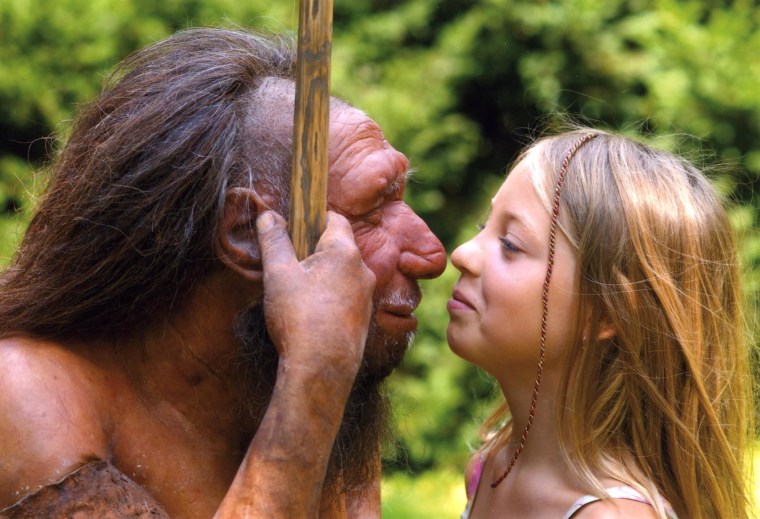Our genes suggest that modern humans interbred with Neanderthals, and that's led some anthropologists to claim Homo neanderthalensis should be considered a subspecies of Homo sapiens rather than a separate species. But other researchers disagree, and one team of specialists says the Neanderthals' nasal anatomy proves they were a species of their own. The comparisons of 3-D coordinates from CT scans of ancient fossils are published in the November issue of The Anatomical Record. "By looking at the complete morphological pattern, we can conclude that Neanderthals are our close relatives, but they are not us," Jeffrey Laitman, an anatomist at the Icahn School of Medicine at Mount Sinai, said in a news release.
The researchers, led by SUNY Downstate's Samuel Marquez, focused on the "startlingly different" features of the Neanderthals' protruding midface. But if a species is defined as a group of individuals that can interbreed, doesn't that mean Neanderthals and modern humans are by definition members of the same species? Tell that to the ligers and the wholphins.
IN-DEPTH
- Nearly Neanderthal: Skulls Reveal Steps in Evolution
- Neanderthals and Humans May Have Had Sex for Millennia
- Earliest Known Love Child of Neanderthals and Humans Found
SOCIAL
— Alan Boyle
In addition to Marquez and Laitman, the authors of "The Nasal Complex of Neanderthals: An Entry Portal to Their Place in Human Ancestry" include Anthony Pagano, Eric Delson and William Lawson.
